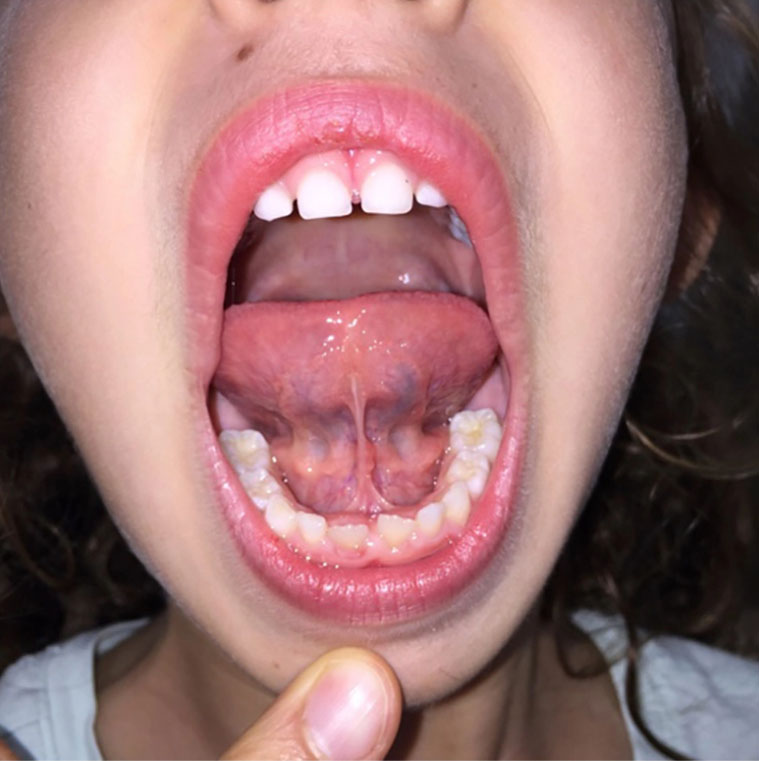What is Tongue-Tie?
Tongue-tie, also known as ankyloglossia, is a condition present at birth that restricts the tongue’s range of motion. An unusually short, thick or tight band of tissue (lingual frenulum) tethers the bottom of the tongue’s tip to the floor of the mouth, so it may interfere with breast-feeding. There are instances when tongue-tie may not cause problems, and other cases may require a simple surgical procedure for correction.

What Causes Tongue-Tie?
Tongue-tie occurs when the tongue and the floor of the mouth fuse during pregnancy. The lingual frenulum normally separates before birth, allowing the tongue unrestricted movement; however, with tongue-tie, the lingual frenulum stays attached to the bottom of the tongue. Some incidences of tongue-tie have been linked to specific genetic factors, although the root cause of this is unknown.
What are the Signs & Symptoms of Tongue-Tie?
Someone who has tongue-tie may have difficulty sticking out his or her tongue. Tongue-tie can also affect the way someone eats, speaks, and swallows. Below are some additional symptoms:
- Difficulty lifting the tongue or moving the tongue from side to side
- Trouble sticking out the tongue past the lower front row of teeth
- A tongue that appears notched or heart shaped when stuck out
- A baby having trouble breast-feeding
- An older child complaining of tongue problems that interfere with eating, speaking or reaching the back teeth
- An adult bothered by their own symptoms of tongue-tie
How is Tongue-Tie Treated?
If tongue-tie develops in infants, children, or adults, surgical treatment may be required, including a frenotomy or frenuoplasty.
Frenotomy
A frenotomy is a surgical procedure that can be performed with or without anesthesia in a hospital nursery or doctor’s office.
Using sterile scissors, the doctor clips the frenulum free. Since there are few nerve endings or blood vessels in the lingual frenulum, the procedure is quick and discomfort is minimal. If bleeding does occur, it is likely to be a drop or two. Breastfeeding can resume following the procedure.
Although frenotomy complications are uncommon, they may include bleeding or infection, or damage to the tongue or salivary glands. Scarring and frenulum reattachment are also possible.
Frenuloplasty
If additional repair is required or if the lingual frenulum is too thick for a frenotomy, a more extensive procedure called a frenuloplasty may be performed.
A frenuloplasty is performed under general anesthesia with surgical tools to release the frenulum. Stitches are then used to close the wound, which will dissolve as the tongue heals.
Similar to a frenotomy, procedure complications are rare but include bleeding or infection, or damage to the tongue or salivary glands. It’s also possible to have scarring and reactions to anesthesia.



